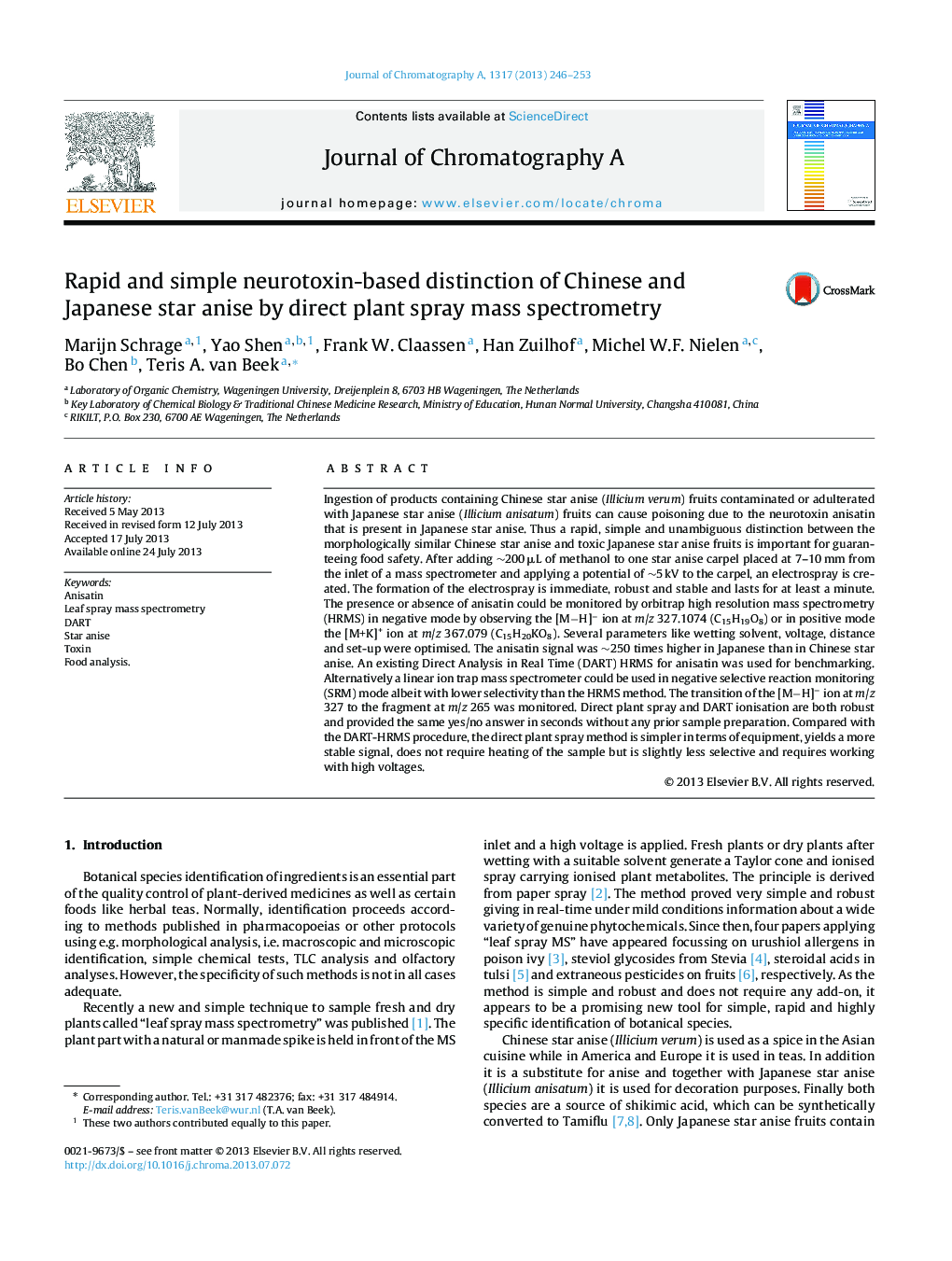| کد مقاله | کد نشریه | سال انتشار | مقاله انگلیسی | نسخه تمام متن |
|---|---|---|---|---|
| 1203341 | 1493609 | 2013 | 8 صفحه PDF | دانلود رایگان |

• Star anise fruits held at 5 kV form an electrospray.
• Neurotoxic anisatin in the spray is analysable by mass spectrometry.
• Medicinal Chinese and toxic Japanese star anise are well distinguishable.
• Direct plant spray ionisation is fast, simple, cheap and robust.
Ingestion of products containing Chinese star anise (Illicium verum) fruits contaminated or adulterated with Japanese star anise (Illicium anisatum) fruits can cause poisoning due to the neurotoxin anisatin that is present in Japanese star anise. Thus a rapid, simple and unambiguous distinction between the morphologically similar Chinese star anise and toxic Japanese star anise fruits is important for guaranteeing food safety. After adding ∼200 μL of methanol to one star anise carpel placed at 7–10 mm from the inlet of a mass spectrometer and applying a potential of ∼5 kV to the carpel, an electrospray is created. The formation of the electrospray is immediate, robust and stable and lasts for at least a minute. The presence or absence of anisatin could be monitored by orbitrap high resolution mass spectrometry (HRMS) in negative mode by observing the [M−H]− ion at m/z 327.1074 (C15H19O8) or in positive mode the [M+K]+ ion at m/z 367.079 (C15H20KO8). Several parameters like wetting solvent, voltage, distance and set-up were optimised. The anisatin signal was ∼250 times higher in Japanese than in Chinese star anise. An existing Direct Analysis in Real Time (DART) HRMS for anisatin was used for benchmarking. Alternatively a linear ion trap mass spectrometer could be used in negative selective reaction monitoring (SRM) mode albeit with lower selectivity than the HRMS method. The transition of the [M−H]− ion at m/z 327 to the fragment at m/z 265 was monitored. Direct plant spray and DART ionisation are both robust and provided the same yes/no answer in seconds without any prior sample preparation. Compared with the DART-HRMS procedure, the direct plant spray method is simpler in terms of equipment, yields a more stable signal, does not require heating of the sample but is slightly less selective and requires working with high voltages.
Journal: Journal of Chromatography A - Volume 1317, 22 November 2013, Pages 246–253